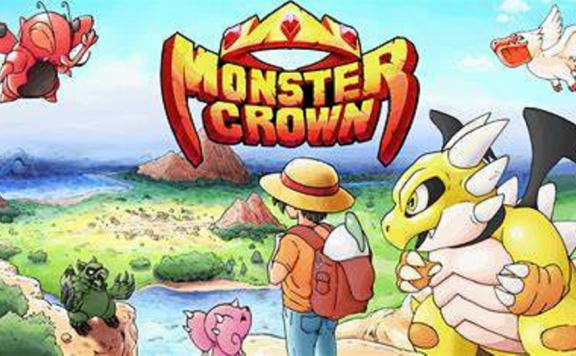It’s a quiet week for releases on Xbox One, with the biggest of releases sitting with both Stranger Things 3: The Game and Sea of Solitude. That being said, Ovivo, one of the lesser known of releases, has you covered if you’re looking for something more distinct and unique. I honestly wasn’t expecting to like this game as much as I have, and whilst far from perfect, it achieves a fair bit of what it set out to accomplish. There’s no story present, mind, but instead, this platformer is one that expresses itself in other ways; mostly through perception.
The game wastes no time throwing you in. In fact, from the profile selection screen, you’re sent straight in head-first. Ovivo serves itself as a side-flipping platformer that has you relying on both speed and momentum to make it through to the end of each level. Now, the game is completely black and white, and it’s black and white aesthetic is precisely where the side-flipping mechanic comes into play. Players take on the role of a small dot, capable of moving to the left, and moving to the right. Interestingly enough, the dot can also invert.
This invert mechanic feeds into the aforementioned aesthetic. You see, each level is served as a large picture made of black and white; not too unlike those “What Do You See” inkblot pictures used by psychiatrists. Playing as the dot, you’re able to traverse each level through traditional left and right movement, but can also phase between the black and white areas through inverting the dots color; when black, the dot can move through the white areas, and on the flip-side, when white, the dot can move through the black areas. It’s very simple.
Naturally, gravity and physics play a role here. For instance, if you’re moving across a black surface as a white dot and come across an uphill section, inverting your color to white will subsequently reverse the role of the hill; being that you’re now at the peak of it, rather than the foot of it. That may sound a bit more complex than it needs to, but as you’re playing, it all makes sense. You’ll use this invert mechanic a lot, and in fact, it’s pretty much the only mechanic outside of movement that you’ll utilize in regards to the game’s overall handling.

The whole affair, however simple it may be in concept, is fairly hard to contextualize. Basically, you’ll swap from black to white, and gravity will shift with you. When in black, the force of gravity is aimed upward, whereas in white, the force of gravity is bearing down. This allows you to fluidly pop between fields as you constantly invert, allowing you to bob and weave through black and white terrain quite systematically as you pursue the correct pathway. Like I said, it sounds quite tough on paper, but in practice it’s easy to digest.
Manipulating this mechanic allows you to clear large jumps, useful for when you’re avoiding environmental hazards such as spikes and other like-minded death traps. Though, the game does throw in new features as progression is made. You’ll hop on to flowers that float you up into the air, you’ll sway across moving structures that propel you across to new areas, and more besides. I’ll credit the game for this, Ovivo certainly knows how to stretch out a simple concept and keep it interesting throughout the entirety of play. It’s unlike anything else.
Despite the fact that there’s no penalty for death outside of restarting at a pre-set checkpoint, Ovivo can be very challenging. The crux of play sees you moving from one end of the level to the other, nabbing collectible orbs of varying flavors along the way. These orbs can be a real test to collect, with many of them tucked away in far-out places that take perfect timing and precision to obtain. Whilst not wholly necessary to collect, they do add a nice degree of replay value to the mix, ultimately meaning you’ll get your bang for your buck.
The game’s intertwining platforming sits really well with its handling, but there are sections within that come across somewhat overly tough. Later on in, the game starts to really ramp up its difficulty; usually forcing you through several hazards that demand perfection. This isn’t a deal breaker by any means, but due to some technical drawbacks, these can feel more troublesome than they’re worth. One issue sees your dot failing to invert to the correct color, essentially leaving you blind as to where you are as you’re black on black, or white on white.

Whilst you can alleviate this problem most of the time through inverting once again, this never really helps when you’re in the middle of a chain of movements. Still, that’s not enough to pull the game shy of being a decent outing. When all is said and done, Ovivo is a solid experience that rarely shows all of its tricks from the off. The game knows pace rather well – almost always throwing something interesting (level design-based) on your lap, be it a tricky level layout, or even a dragon that chases you through a series of tough platforms.
Once you reach the end of a level, the camera will zoom out to show you what you’ve been working through, and it’s usually a sight to behold. There’s a hidden meaning in Ovivo that will likely draw different thoughts and emotions from player to player, serving up some perception-provocative imagery throughout. Further to that, there’s usually more than one way to reach a level’s end, and you’ll rarely see this until you see the level in full to truly eye up the many varying routes you could have taken, as well as several padded, hidden areas.
In regards to the visual and audio design, Ovivo gets a safe pass on both fronts. Using only black and white hues, Ovivo says a great deal without ever saying much at all. It’s one of those games that will stick in your memory for more reasons than one, and it’s clever use of detail is what instills that notion for the most part. The audio score only further solidifies that, collectively putting forward a journey that, as noted, will stay with you long after the credits roll. Bottom line? If you’re seeking a unique platformer, this should be on your radar.
Conclusion
Ovivo, despite its technical drawbacks and its habit of frustrating its players, is one of those games that says a great deal without ever uttering a single word. The game’s artistic inkblot-like presentation not only serves its platforming structure remarkably well, but toys wonderfully with the senses. That said, the game’s aforementioned issues do pull it just shy of greatness in the long-run, but even so, it’s one platformer I can comfortably recommend.
This game was tested and reviewed on Xbox One. All of the opinions and insights here are subject to that version.Want to keep up to date with the latest Xt reviews, Xt opinions and Xt content? Follow us on Facebook, Twitter, and YouTube.




